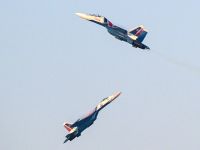Getting off the ground, paradoxically, gives the
observer the big picture which allows things to be
seen in the distant view which are invisible at ground
level. Since it gathers data at a distance, aerial
photography is a “remote sensing” technique.
always, involves photography, traces its roots back to
photographs taken during balloon fights in the mid-
nineteenth century. The black and white shot of
Stonehendge taken from a military balloon in 1906 was
one of the first aerial photographs of an archaeological site. During the very early days of aviation, archaeologists soon began to realize the full potential of viewing sites from a convenient vantage point in the sky.
Besides the hump of a camel, early low-tech approaches included hilltop surveys of Egyptian archaeologist by the famous Egyptologist, Leonard Wooley, and the “aerial” pictures taken by the pioneer American archaeologist Earl Morris from the top of telegraph poles. High quality aerial photographs using the low-tech approach were also taken from balloons, camera-equipped kites and even tall ladders to capture that coveted overhead view - aqua. End of experimental section
This text will be big and purple. Purple
This text will be big and purple. Teal
This text will be big and purple. Aqua
This text will be big and purple. Navy
This text will be big and purple. Silver
This text will be big and purple. Fuchsia







